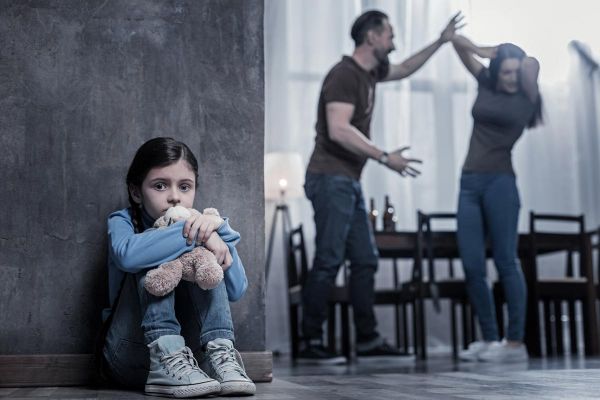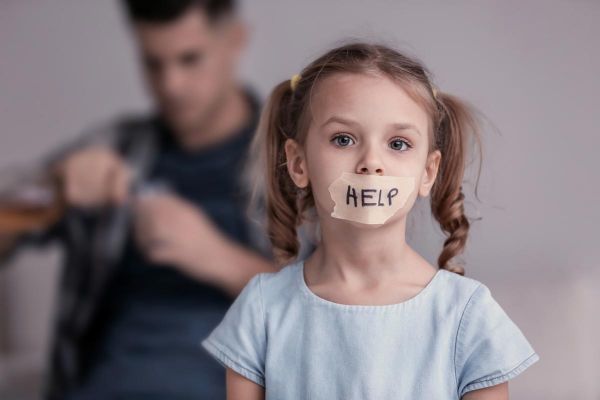 Mental illness impacts nearly 1 in 5 Americans. That means 19% of us, or about 46 million U.S. adults, have a mental illness. These mental illnesses negatively impact everything from physical health to emotional wellbeing, relationships, productivity, and quality of life. And, while we can reliably diagnose many of them, millions of us don’t get a diagnosis or the support and care we need to recover and live rewarding and healthy lives.
Mental illness impacts nearly 1 in 5 Americans. That means 19% of us, or about 46 million U.S. adults, have a mental illness. These mental illnesses negatively impact everything from physical health to emotional wellbeing, relationships, productivity, and quality of life. And, while we can reliably diagnose many of them, millions of us don’t get a diagnosis or the support and care we need to recover and live rewarding and healthy lives.
That’s important because getting mental healthcare can improve your quality of life, help you to build better relationships, and can help you to live longer. Only 43.3% of individuals with a mental illness ever seek treatment, and that heavily links to stigma surrounding what mental illness is, and whose fault it is.
Today, behavioral science shows that mental illness is far from a personal failing. Instead, it’s the result of a complex combination of genetics, economic and social wellbeing, chance, lifestyle, upbringing, and past trauma. For many of us, child abuse, even moderate bullying and emotional neglect, can play a heavy role in that. The link between child abuse and mental illness is well understood and very real.
The Adverse Childhood Experiences Study
In 1995, the Centers for Disease Control and the Kaiser Permanente Health Clinic started a joint study. This study, the Adverse Childhood Experiences Study, ran over two years, during which over 17,000 patients completed a physical exam, filled out a questionnaire, and completed psychological profiling. The study was intended to profile the impact of adverse childhood experiences (abuse, trauma such as car accidents, deaths in the family, family divorce, ongoing domestic violence, etc.).
It eventually found that Adverse Childhood Experiences had a profound and measurable impact on both physical and mental health. Not only were children who experienced trauma and neglect more likely to grow into adults with anxiety and panic disorder, they were also more vulnerable to diabetes, heart disease, and cancer.
That’s especially true for mental health disorders. Children exposed to trauma before the age of 13 are as much as 50% more likely to develop a mental health disorder than children not exposed to such a traumatic event.
Trauma and the Growing Brain
While adverse childhood experiences like abuse, bullying, and emotional neglect impact children in different ways, they all impact the brain and how it develops. These changes can be moderate to severe depending on the age at which abuse starts and the duration of abuse. However, they are changes to the physical makeup of the brain. For example, children exposed to early abuse have changes in shape to the corpus callosum and hippocampus, reduced prefrontal cortex activity, and changes in the hypothalamic-pituitary-adrenal system. The last is especially notable, as it directly creates chemical vulnerabilities to depression, psychosis, borderline personality disorder, and anxiety. Most importantly, children experiencing high levels of stress through trauma and abuse can experience permanent changes in Oxytocin production. Because Oxytocin controls how we respond to and experience stress, it can cause heightened rates of stress, putting the individual at risk of mental health disorders like anxiety, panic disorder, and depression – because life actually becomes more difficult to deal with.
The results are:
- Increased vulnerability to mental health disorders
- Increased thoughts of worry (leading to increased vulnerability to mental health disorders
- Increased risk-taking
- Increased dependence or reliance on people and relationships OR very strong senses of self-reliance, leading to vulnerability to codependency
- Increased vulnerability to addiction and chemical dependence through self-medication
While changes to the physical brain can be significant, they are just one way in which child abuse can lead to a mental health disorder.
Trauma and Mental Health
 An estimated 600,000+ U.S. children are victims of child abuse every year. While ages 3-8 are the most common for child-abuse victimization, children of any age can become victims. And, child abuse can take the form of violence, emotional neglect, emotional manipulation, neglect, severe punishments, psychological abuse, purposefully withholding necessities, sexual abuse, and any combination thereof. These all result in trauma responses which are then often not dealt with and can, instead, go on to cause lifelong problems and trauma reactions.
An estimated 600,000+ U.S. children are victims of child abuse every year. While ages 3-8 are the most common for child-abuse victimization, children of any age can become victims. And, child abuse can take the form of violence, emotional neglect, emotional manipulation, neglect, severe punishments, psychological abuse, purposefully withholding necessities, sexual abuse, and any combination thereof. These all result in trauma responses which are then often not dealt with and can, instead, go on to cause lifelong problems and trauma reactions.
Left untreated, trauma results in increased risks to mental health, which stack on top of ACE risks. For example, an individual who has undergone trauma and not been treated for PTSD might suffer long-term flashbacks, heightened anxiety, and an ongoing fight or flight response to events that happened when they were children. This becomes more problematic over time, as the brain and body adapt around that trauma. PTSD affects adults when they suffer from car accidents, attempted robbery, domestic abuse, etc., but for children, it’s much harder to spot, especially if those children are enduring ongoing abuse.
Nurture and Mental Health
The environment in which children grow up in shapes their mental health, coping mechanisms, and ability to live a happy and healthy lifestyle. Many parents, despite their best intentions, are unable to provide this. Millions of children grow up experiencing neglect, abuse, and trauma. This impacts the child’s behavior, risk-taking, and coping mechanisms, often for the long-term.
- Interruptions in family hierarchy cause lifelong bonding and relationship problems. This interrupts the ability to form happy and healthy relationships, to maintain family and relationship ties, and to contribute to and be part of meaningful relationships
- Children who are around parents who abuse substances, are more likely to use those same coping mechanisms themselves
- Children who learn behavior such as angry outbursts, poor self-care, and poor mental health habits are unlikely to learn better ones without help.
- Abuse contributes to reduced risk-taking inhibitions, leading to increased likelihood of substance abuse, involvement in crime, and involvement in bullying. All of these create further risks for mental health problems, as a child and as an adult
Essentially, child abuse contributes to mental health problems in numerous ways, both through increased direct vulnerability and by increasing risk factors and potential risk factors. A child who has been abused is chemically more vulnerable to mood disorders but also more likely to engage in behaviors and habits that increase vulnerability to those disorders. And, trauma can directly cause mental health problems.
If you or a loved one is struggling with mental health it’s important to reach out and get help. While childhood trauma and abuse can permanently change your brain, you can always train behaviors, reactions, and your lifestyle. These may not “cure” your disorder, but they will give you the tools to improve how you manage life, to improve your quality of life, and to reduce symptoms.
If you want to learn more, the Gooden Center is here to help. We offer primary mental health treatment for men and women with support for dual diagnosis and substance use disorders, to help you move through underlying problems, to develop new and healthy behaviors, and to build a healthy future. Contact us today to speak to an experienced advisor in complete confidence.